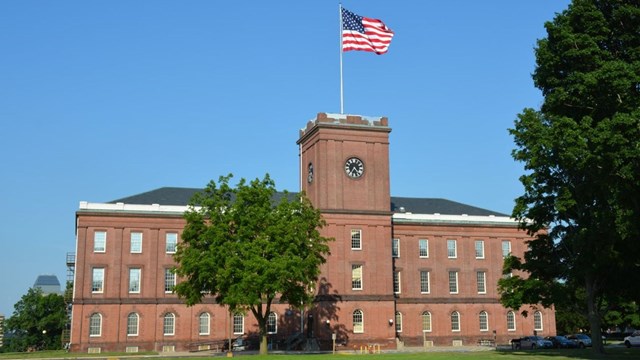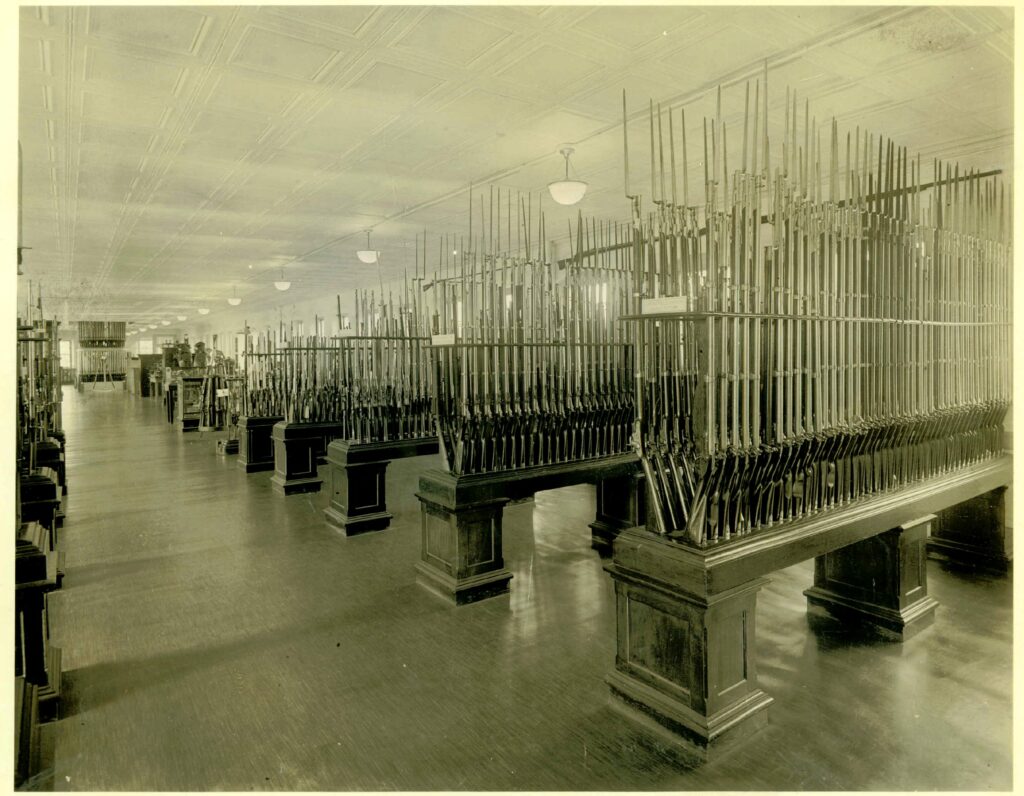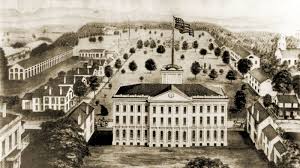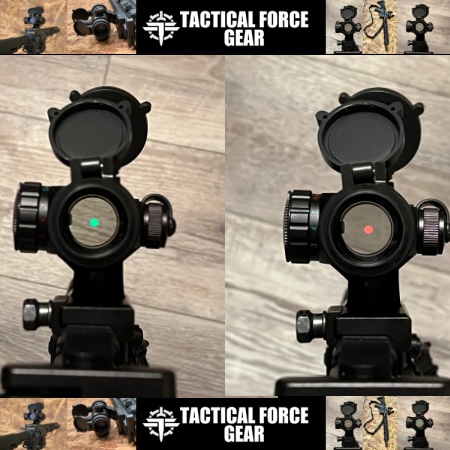Springfield Armory closed its doors in 1968. The Armory had served the United States since 1794, and its closing was immensely controversial. Robert McNamara did it as a method to save money and improve efficiency. As the U.S. Military adopted the M16, a weapon designed by Armalite and produced by Colt, the Armory received its final nail in the coffin.
A New Springfield Armory?
I acknowledge that a private company called Springfield Armory exists, but for this article, when I say Springfield Armory, I mean the traditional government armory. Springfield Armory produced everything from muskets to machine guns and provided weapons to George Washington, George Patton, and Carlos Hathcock.
McNamara closed the legendary Armory in favor of teaming up with private industry to produce firearms for the American military. I’m a dyed-in-the-wool private company man myself. The government can be slow, painfully so, and painfully inefficient. It’s quite common to see red tape and bureaucracy, as well as incompetence, fester and grow in government service.

However, we can’t ignore the fact that Springfield Armory produced some fantastic firearms. The M1 Garand was a game-changing infantry rifle, and it came from the Armory. They often worked best when working hand-in-hand with private industry.
With that in mind, would the United States military benefit from a modern Springfield Armory? A government armory staffed with experts looking to produce and design the best weapons possible for our forces?
A Modern Springfield Armory
A modern Springfield Armory should be a joint effort from all branches, a bit like the Joint Service Small Arms Program. This way, each branch could explain its needs and wants and help develop and approve potential new firearms for its forces. There isn’t a one-size-fits-all solution to military armaments.
A modern Springfield Armory could also coordinate programs already in use by individual branches, like NSWC-Crane and the Marine Corps Precision Weapons Section. These programs wouldn’t need to be housed under the same building in a modern era, but if they fell under a weapons-centric agency, data and experience could more easily be shared.

A big part of the modern government armory would be working with private industry to help ensure efficiency. The Armory could be the brick wall between the military and substandard products getting into soldiers’ hands. However, they should be willing and encouraged to work with private industry in the development and production of firearms, preferably to help guide programs.
The U.S. Army released very specific requirements for the NGSW, but were those requirements realistic long-term? The modern Springfield Armory could also be an unbiased source that doesn’t have a profit motive, that could shine a light on the Army’s needs and rein them in. Speaking of reigning in, it took the Army two years and $17 million to pick a new handgun. That’s ridiculous.
Optimistically, the Armory could employ designers and engineers to take the needs of a particular branch or unit and work to design a weapon, which can later be produced by private industry. A new Springfield Armory staffed by experts and even military armorers could work to produce new concepts or to examine the concepts of other countries.
The Challenges
The first challenge is to avoid the problems the original Springfield Armory had, which is getting absorbed by tradition. The insistence on a wood-stocked steel battle rifle that fired a .30-cal round helped end the Armory. The disastrous M14 was the last rifle they produced and was steeped in ridiculous tradition that showed the government was useless.

Additionally, focus on efficiency. Too often, government agencies get bogged down in red tape and paperwork that serves low-IQ government workers and helps them keep a useless job. Avoid that. Be thorough, but create reasonable expectations and timelines. Hold leaders accountable.

Also, be willing to work with the private firearms industry, including foreign companies. FN produced the M240, which is a fantastic machine gun. If we want to provide the best weapons possible for our warfighters, we have to break away from the idea that foreign designs won’t work.
Armory Dreaming
My idea of an Armory would be part armory, designing and producing prototypes, and part communication hub. A place where the wisdom and experience from the different branches and their various custom shops can be collected, disseminated, and shared. The Armory wouldn’t need to be much, but could be massively beneficial in collecting, sharing, developing, and streamlining programs.
Read the full article here













